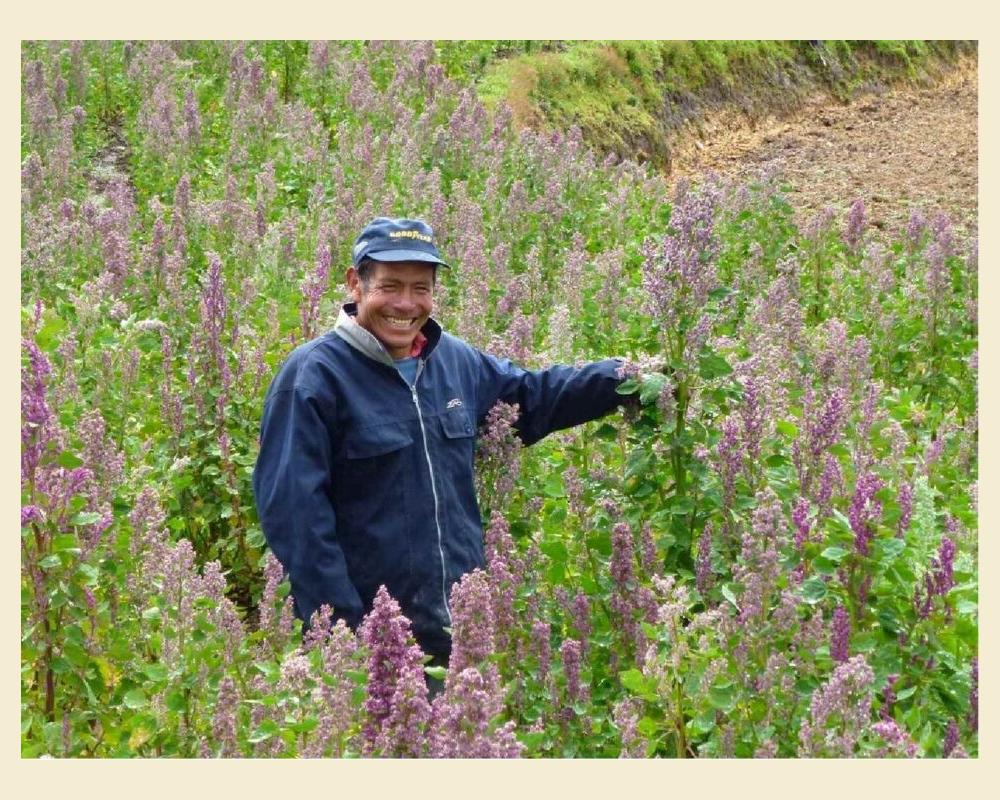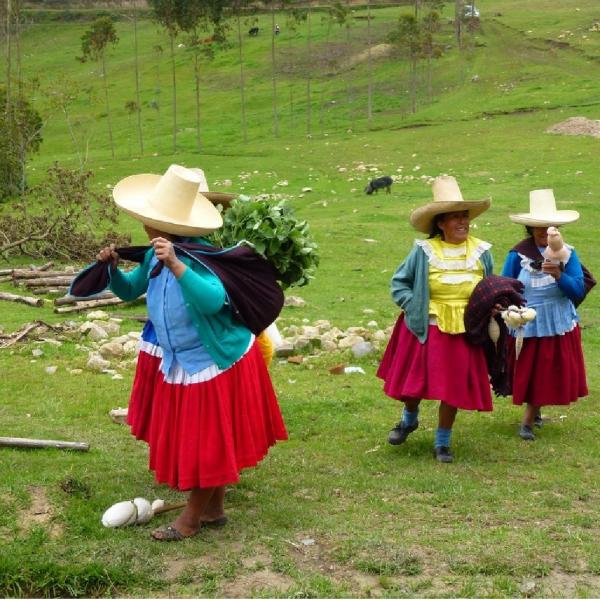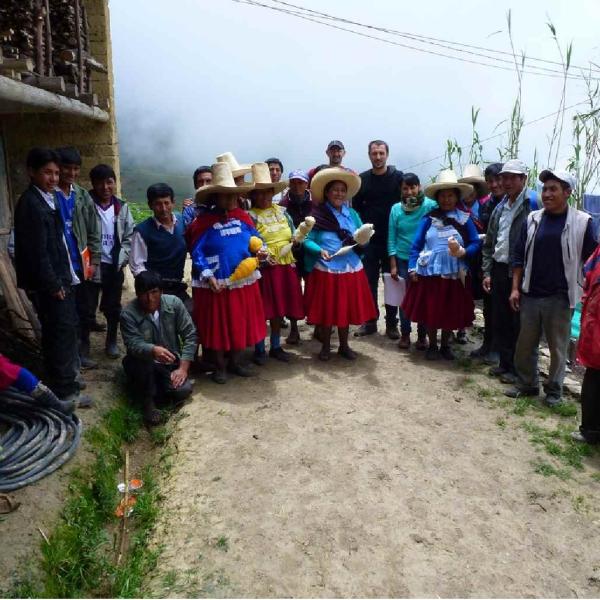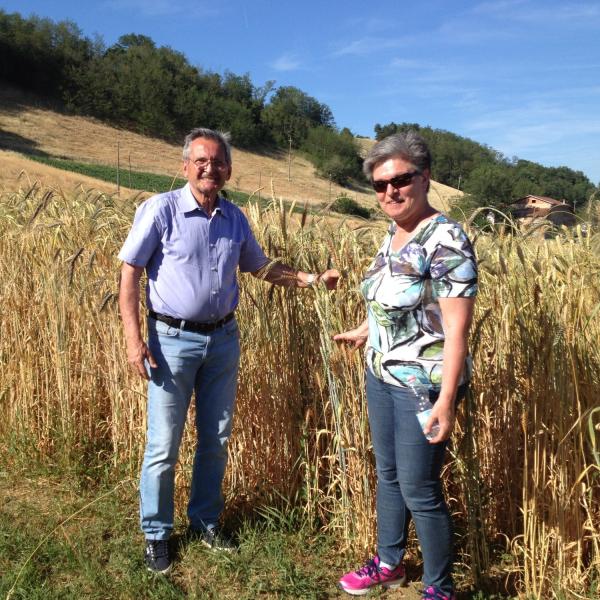Quinoa, queen of Andean biodiversity
25.02.22

Quinoa is considered a pseudocereal because it is an annual plant that produces a large ear rich in seeds, but it belongs to the Chenopodiaceae family, which includes spinach, chard, beets, etc. Originally from the Andes, quinoa is a very adaptable crop resistant to drought, cold and salinity, spread from coastal regions to 3500 meters, especially in Peru, Ecuador, Bolivia, Chile and Argentina.
The Peruvian Quinoa that you find in our stand is imported and developed by our supplier Rewild. It is a high quality product that comes from small organic producers who defend and enhance Andean biodiversity by cultivating pseudocereals (quinoa and amaranth), tubers and native legumes (yacon, local corn, Andean lupine, etc.). All supply chains comply with the principles of Fair Trade.
This supply chain was born in the Andean region above 2500 meters above sea level and local varieties adapted to the climate and territory of Peru are used. The producers are a network of more than 200 campesinos, Andean families of Quechua culture and language with plots of 1-2 hectares on average, who live in different Andean and high Andean provinces of the regions and Cusco, Puno and Ayacucho, in south-central Peru. The cultivation of quinoa often combines traditional Andean methods (planting times, planting of multiple varieties and association with other species) with modern BIO methods (organic fertilization, rotations, biological control of parasites, etc.). The main varieties are: white quinoa varieties Salcedo, Blanca Junìn and Huallhuaus, which are sown together because the diversity in the field reduces the impact of parasites or extreme climatic events.
The harvest takes place manually between February and June, then it is dried in the sun. In the most isolated communities that maintain the self-consumption of quinoa, it is threshed manually and “sieved” in the wind according to the traditional method. The processing takes place in Lima, where the seeds are cleaned, selected and above all washed by saponins (indigestible substance present only externally). The local partner works closely with farmers and promotes association processes between producers, provides free training-consultancy-technical assistance and supports the farmers' certification process.
Sustainability for local communities has many critical issues: the worldwide fashion for this food has produced, especially in Peru, speculative processes on the part of international companies. The hoarding of this raw material has a negative impact on the food security of rural communities (hunger) and divisions and conflicts within the farmers' organizations themselves. The actors in the Fair Trade sector, therefore, not only reward the organic method (environmental sustainability) but above all they seek supportive relationships and offer support to small producer organizations. Finally, the contribution of conscious and fair trade consumers lies in recognizing a price higher than the average... and in eating it in moderation as was done in the past with all the exotic excellences.
Why is it good for you? The exceptional characteristics of this food are the absence of gluten and its high digestibility, which coexist with a great nutritional wealth of fibers and proteins, especially essential amino acids, as well as unsaturated fatty acids, and minerals such as calcium and iron!
How do you prepare it? Like boiled rice, bring water to a boil and add quinoa (half the volume of water), then cook over low heat until the water is completely absorbed. It can be eaten alone or mixed with other cereals and vegetables, seasoned for example as a rice salad. Also ideal for soups, as a base for meatballs, fillings, timbales etc.
The Peruvian Quinoa that you find in our stand is imported and developed by our supplier Rewild. It is a high quality product that comes from small organic producers who defend and enhance Andean biodiversity by cultivating pseudocereals (quinoa and amaranth), tubers and native legumes (yacon, local corn, Andean lupine, etc.). All supply chains comply with the principles of Fair Trade.
This supply chain was born in the Andean region above 2500 meters above sea level and local varieties adapted to the climate and territory of Peru are used. The producers are a network of more than 200 campesinos, Andean families of Quechua culture and language with plots of 1-2 hectares on average, who live in different Andean and high Andean provinces of the regions and Cusco, Puno and Ayacucho, in south-central Peru. The cultivation of quinoa often combines traditional Andean methods (planting times, planting of multiple varieties and association with other species) with modern BIO methods (organic fertilization, rotations, biological control of parasites, etc.). The main varieties are: white quinoa varieties Salcedo, Blanca Junìn and Huallhuaus, which are sown together because the diversity in the field reduces the impact of parasites or extreme climatic events.
The harvest takes place manually between February and June, then it is dried in the sun. In the most isolated communities that maintain the self-consumption of quinoa, it is threshed manually and “sieved” in the wind according to the traditional method. The processing takes place in Lima, where the seeds are cleaned, selected and above all washed by saponins (indigestible substance present only externally). The local partner works closely with farmers and promotes association processes between producers, provides free training-consultancy-technical assistance and supports the farmers' certification process.
Sustainability for local communities has many critical issues: the worldwide fashion for this food has produced, especially in Peru, speculative processes on the part of international companies. The hoarding of this raw material has a negative impact on the food security of rural communities (hunger) and divisions and conflicts within the farmers' organizations themselves. The actors in the Fair Trade sector, therefore, not only reward the organic method (environmental sustainability) but above all they seek supportive relationships and offer support to small producer organizations. Finally, the contribution of conscious and fair trade consumers lies in recognizing a price higher than the average... and in eating it in moderation as was done in the past with all the exotic excellences.
Why is it good for you? The exceptional characteristics of this food are the absence of gluten and its high digestibility, which coexist with a great nutritional wealth of fibers and proteins, especially essential amino acids, as well as unsaturated fatty acids, and minerals such as calcium and iron!
How do you prepare it? Like boiled rice, bring water to a boil and add quinoa (half the volume of water), then cook over low heat until the water is completely absorbed. It can be eaten alone or mixed with other cereals and vegetables, seasoned for example as a rice salad. Also ideal for soups, as a base for meatballs, fillings, timbales etc.
PREVIOUS ARTICLE
25. 02. 22
25.02.22
Sowing the future: there is more pleasure in being different!
Friday, December 17 at 4 pm, the Conference “Biodiversity, World Heritage” will be held at the Rubano Ethnographic Park (Padua) with geneticists Salvatore Ceccarelli and Stefania Grando to t...
Read






